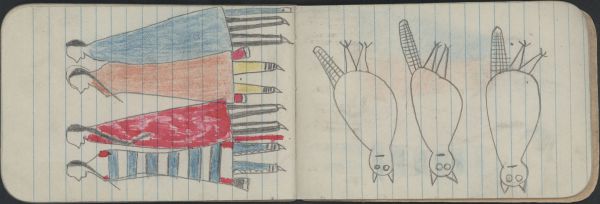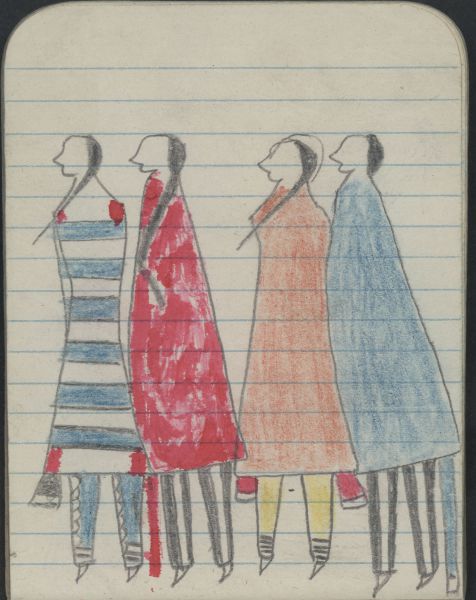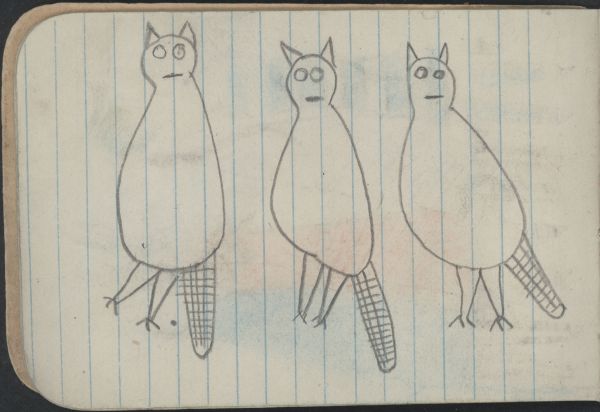COURTING, TWO COUPLES-Women in 2nd Phase Navajo's Chief's Blanket & Red Blanket; BIRDS, OWLS
Ethnographic Notes
68 The page is rotated left to fit on the page lengthwise (portrait format), similar to the preceding three plates. Two couples stand in profile, facing the left. In a similar configuration to previous COURTING scenes of two couples: man, woman, man, woman. Three wear simple, solid-color blankets, and the last woman is wrapped in a second phase Navajo chief's blanket. The first man, to the far right, has dark hair but no braid. He wears a simple blue trade cloth blanket. His one clout flap that shows, in behind, is matching blue. Men both have dark (pencil fill) leggings with single white stripes down the lengths (Lanford, 2003: 201).The next figure, a woman, has one black braid showing on her shoulder. She wears a simple orange blanket. Her leggings are yellow, probably buckskin. Four bands at each ankle are ends of her leggings or perhaps painted bands. Ends of her dress panels that show under the blanket are red trade cloth with white, undyed selvedges. The next figure is a man wrapped in a simple red blanket. His long braid is extended with ties at the ends. His red breech clout is visible in front only. The last figure, at the far left, is a woman wearing the Navajo blanket. She wears blue leggings with small round German silver conchos or buttons running in a row up the front seam. The legging cuffs are two white stripes. One dress panel end shows under the blanket, dark (lead pencil fill) contrasting with an undyed white selvage. This seems to mirror pages 65 and 67. See plate 1 for further discussion of COURTING conventions. 69 These three pencil-outlined owls have horns like great horned owls and prominent eyes. Their tails extend straight down, creating an almost abstract design. Their three-toed talons are visible, although no roosts are apparent. The barred tail and prominent ears are distinctive owl characteristics. From the frontal perspective, the foreshortened owl beak flattens out. This drawing is almost identical to the three owls in PILA plate 37. Owls are indicators of the night world and the after-life in Cheyenne thought. The prisoners at Dodge were indeed close to death. The Cheyenne word for �ghost� is the same as the word for �owl� (Powell Sweet Medicine fn 440, quoting Petter, Dictionary, p. 1000). Powell goes on to describe ghosts as spirits derived from the dead, but not ghosts of specific people. The depiction of owls in ledger art is extremely rare and �surprising,� according to Powell (1984 letter). Making Medicine included a great horned owl in his �Fowls of Indian Territory� (Berlo, 1996: 136).


